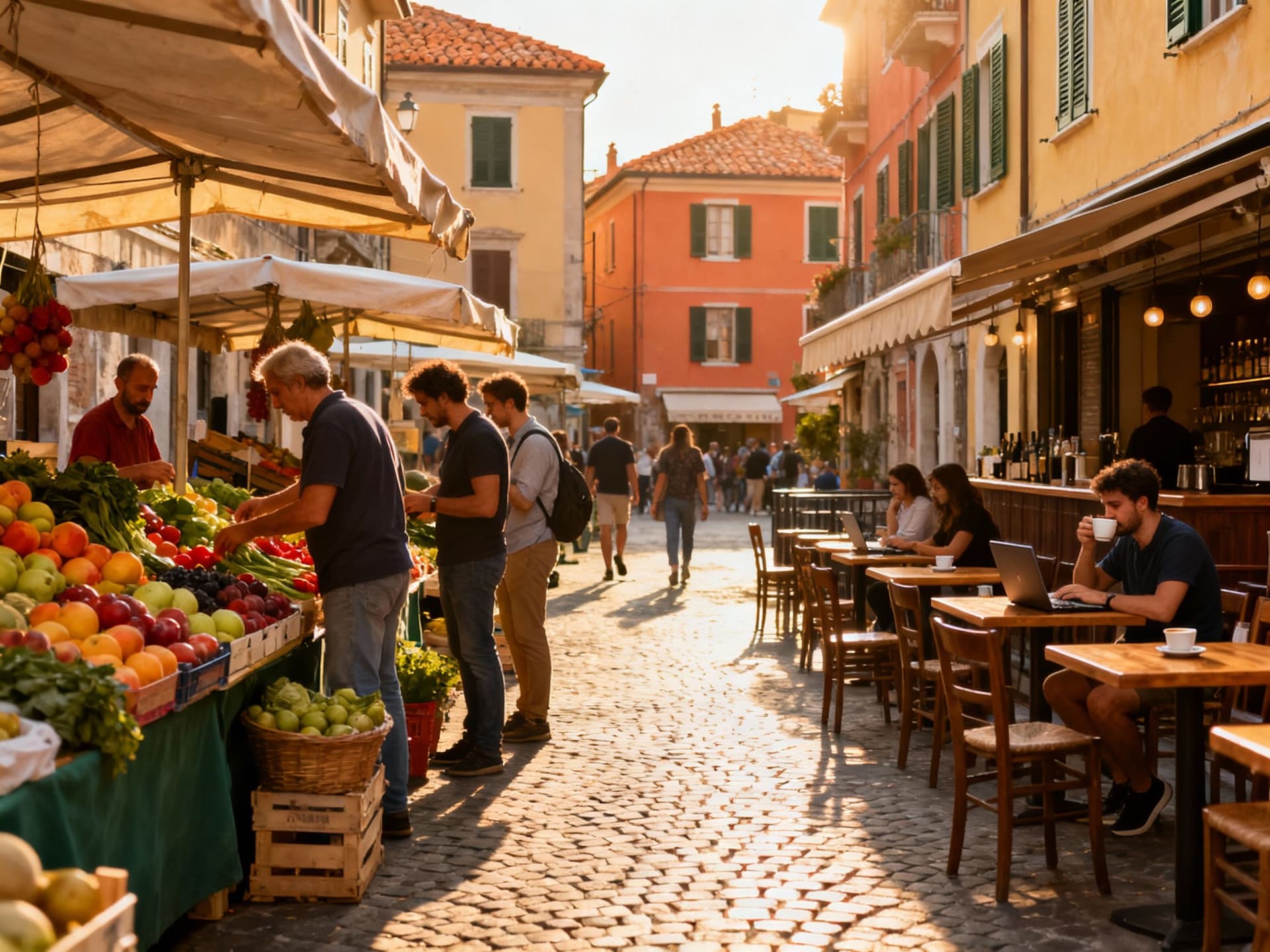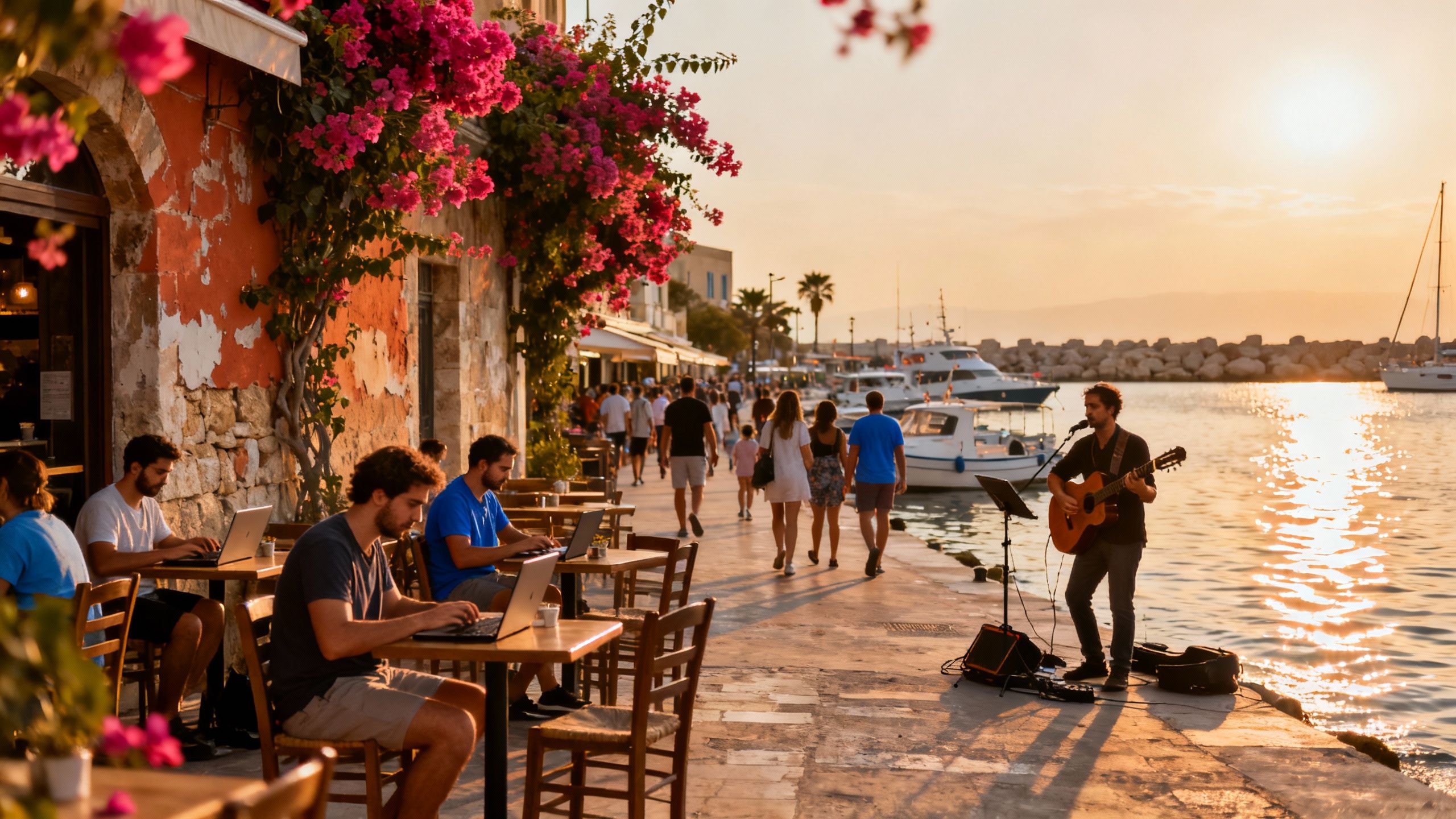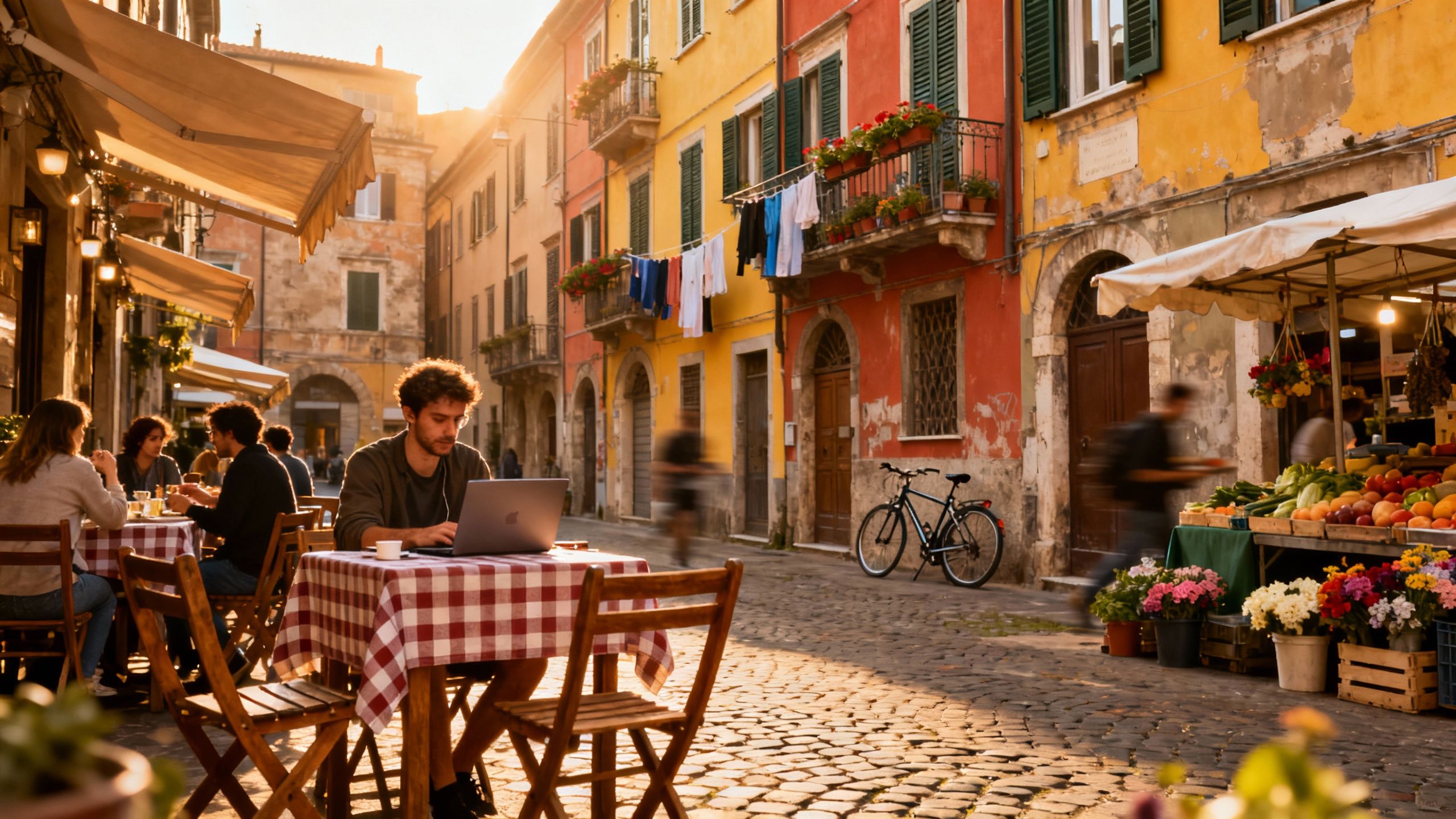Italy Isn't All Pricey: Surprising Value Pockets for Nomads
Italy’s price story isn’t uniform: national data shows rising transactions, but lifestyle‑driven buyers can find value in second‑ring towns and neighbourhoods with real community.
Imagine sipping an espresso on a sunlit piazza in Lecce, then hopping on a two‑hour train to a cobbled street in Florence — and still paying less per square metre than a tiny inner‑ring flat in London. Italy’s romance is real, but its price story isn’t one note: expensive cities coexist with surprising value pockets that suit the remote worker, creative entrepreneur, or family seeking a slower rhythm.
Living the Italy lifestyle: what you actually get

Italy feels like a year‑long festival of food, light and community. Mornings begin at the bar with quick espresso; afternoons often pause for a slow pranzo; evenings are for passeggiata and aperitivo. Small streets teem with fruit sellers, neighborhood bars and the smell of fresh bread — which matters because the places where locals live, shop and socialise determine which neighbourhoods keep value and which become tourist-fueled mirages.
Neighborhood spotlight: Pigneto, Rome and San Lorenzo, Florence — everyday vibrant
Pigneto’s graffiti‑lined lanes and corner trattorie attract creatives; San Lorenzo hums with students and neighbourhood markets. These aren’t postcard districts — they’re living, mixed communities with cafés that double as coworking hubs, decent fibre options a short walk away, and landlord types open to mid‑term rentals. That local authenticity often equals better long‑term value than an overhyped central square.
Food, markets and ritual: how daily life shapes property choice
If your idea of Italian life includes weekly market runs, a favorite rosticceria and an espresso bar that knows your name, look for apartments near mercato spaces (e.g., Mercato Centrale Firenze, Testaccio Market in Rome). Proximity to these social hubs often matters more than a sea view when you want real community — and properties in these pockets can be undervalued compared with slick tourist strips.
Making the move: the market reality behind the romance

Romance meets paperwork: Italy’s housing market is active and regional. Transactions rose in 2024 and early 2025, driven by existing‑home sales and a construction spike around tax incentives. That means inventory exists — but its location and type determine value. Savvy buyers trade clichés for micro‑opportunities: restored farmhouses near food hubs, second‑ring urban apartments near coworking, or coastal towns with year‑round life, not just summer rentals.
Property types that actually suit nomads and remote workers
Look beyond glossy listings. A 60–90m² historic flat with a bright workspace and reliable fibre often beats a tiny new build with poor layout. Terraced homes in towns like Lucca, Reggio Emilia or Lecce offer community life and lower price per square metre than top‑tier city centres — and they often come with terraces, courtyards and a slower pace that remote work benefits from.
- Practical moves that blend lifestyle and market sense
1. Target second‑ring neighbourhoods near transport and markets — they balance price and daily-life access. 2. Prioritise existing dwellings: ISTAT shows recent national rises were led by existing properties, meaning renovated stock can still be competitive. (See ISTAT HPI Q1 2025.) 3. Ask agents for landlord‑friendly communities if you plan to rent short or mid‑term — that affects yield more than headline price. 4. Test internet at different times of day; fibre reach varies block to block in older towns.
Insider knowledge: what expats wish they’d known
Expats often assume Italy means high, uniform prices. Not true. Region matters. Southern towns and smaller provincial capitals offered better value and stronger recent volume growth in 2024, according to OMI reports — and that trend creates choice for lifestyle buyers. But tax quirks, municipal IMU rules and residency timing can change your effective cost, so match lifestyle choices with tax planning.
Social life, language and making a neighbourhood yours
You don’t need fluent Italian day one. Learn basic greetings and market phrases; show up at the bar regularly; join a language tandem or a local cooking class. That’s how you become seen as ‘one of us’ and access local opportunities (short‑term sublets, tradespeople, market stalls) that make life easier and cheaper. Neighbourly capital is often the best ROI.
- Local red flags to watch for before you sign
• Overly touristified blocks where short‑term demand inflates prices but leaves empty streets off‑season. • Buildings without clear cadastral records — insist on notaio checks. • Poor heating insulation in older properties (winter cost shock). • No proof of reliable internet or mobile signal — test it. • Over‑negotiated agent‑only listings with opaque commission splits.
How local agencies help: use them like lifestyle matchmakers. Good local agents know which streets have markets at dawn, which landlords accept remote‑worker leases, and where fibre is planned. They also coordinate notaio checks and explain how a property’s cadastral class affects future IMU and resale. Treat them as curators, not just salespeople.
Recent data shows the market is breathing: transaction volumes rose in 2024 and early 2025 even as prices rose unevenly across regions. That’s good news for buyers who are flexible about location and focused on lifestyle features like community, markets and workspace — not just the flashy postcode.
Next steps if Italy feels right for you
1. Pick lifestyle priorities (markets, beaches, coworking, schools). 2. Shortlist 3‑4 towns with those features and check recent OMI/ISTAT trends. 3. Book a 7–10 day scouting trip: live like a local — shop, work from cafes, test internet. 4. Engage a local agent and a notaio early; get a codice fiscale and confirm tax treatment before offer.
Conclusion: Italy isn’t a single market — it’s dozens of markets wrapped in amazing food, light and community. If you prioritise life first, data second, and pick agents who know both, you’ll discover pockets where the dream is affordable and sustainable. Ready to find which Italian street fits your workday and weekend? Start with a short scouting trip and bring a curious heart — the rest follows.
Danish investor and relocation advisor focusing on Portugal and the Algarve; loves coworking culture and expat networks.


